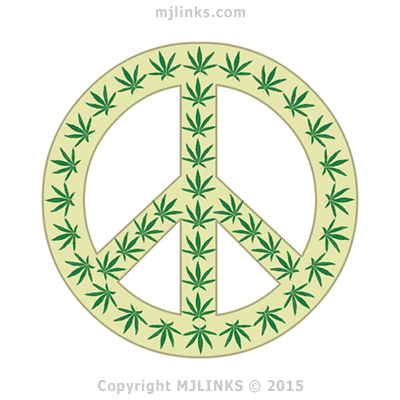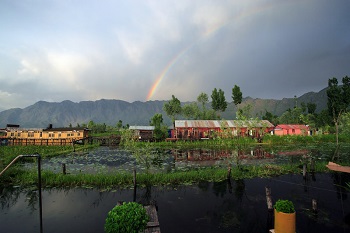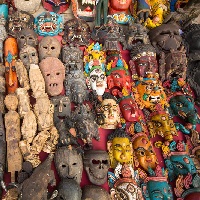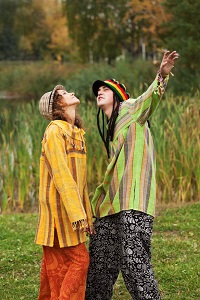The Hippie Trail or the Quest for Cannabis and Peace
There was a time when you could get into a bus in London and reach Delhi. The bus would take you to Turkey; then through Iran, Afghanistan, and Pakistan, it would finally arrive in Kashmir, India. But those were different times. That was the time when Afghanistan was an apparently peaceful and secular country; when Pakistan wasn’t infested with terrorists; and when Kashmir indeed was heaven on earth. Those were the 60s and the 70s, when travelers, mainly hippies, would get into buses, trucks, or even hop onto motorcycles and go east in their quest for cannabis and spirituality.
Those were the times when Cannabis was legal in India and Nepal and when the Middle East was still a happy place. American and European Hippies would follow what was later called the Hippie trail and arrive in India. The Hippies believed in community living and free love; they loved nature and professed peace; they also loved marijuana. Right at the beginning of the trail Afghanistan greeted them with Hashish, then Kashmir ushered them into India with Charas, and Nepal welcomed them with open arms by establishing the Freak Street for them.
Some of the Hippies that entered India would stop in Kashmir, others would go further to Manali in the hill-state of Himachal Pradesh, yet some others would find their way to Goa, especially if they took the trail in winter. Goa is situated on the western coast of India and with its beautiful beaches it soon turned into a sought-after winter-destination for Hippies. Then in India, Hippies were a rage. They were the first tourists to arrive in post-independence India, and it was easy to identify them by their long hair, their colorful attire, their love for peace and marijuana, and their carefree attitude.
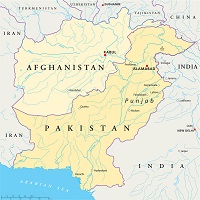 The countries on the trail responded to their new guests with fervor. Lodges, eateries, and hashish pubs opened up along the way. The trail passed through Tehran in Iran, to Herat and Kabul in Afghanistan, to Peshawar and Lahore in Pakistan, until it finally arrived in Delhi. From India, some diehards would find their way to Bangkok too. This meant good business for all those shops (some run by the country governments) that helped keep the Hippie Chillum filled with Hashish.
The countries on the trail responded to their new guests with fervor. Lodges, eateries, and hashish pubs opened up along the way. The trail passed through Tehran in Iran, to Herat and Kabul in Afghanistan, to Peshawar and Lahore in Pakistan, until it finally arrived in Delhi. From India, some diehards would find their way to Bangkok too. This meant good business for all those shops (some run by the country governments) that helped keep the Hippie Chillum filled with Hashish.
Unfortunately for these businesses, the Hippie Trail suffered an abrupt and largely unexpected demise toward the end of the 70s. Iran, the first non-European country on the trail, experienced the Iranian Revolution against the west-looking, progressive Shah. The orthodox Islamists revolted against the regime. Whether this revolution was in part fueled by the Hippies is a matter of some speculation (“Legacy of the Hippie Trail” Rory Maclean) but it resulted in the shriveling, and a little later, the end of the trail.
One of the places that rose to meet the weed-needs of these tourists was the Freak Street in Kathmandu, Nepal. The street had perhaps been there for centuries before the trail. This was the place where the Nepalese Government ran Hashish shops for the hippies. The young hippy who wanted to make the world a better place, who wanted to offer peace and flowers to people around him, found a wellspring of legal cannabis in this beautiful city.
But while the hippies came here looking for legal marijuana, they inadvertently became instrumental in the US arm-twisting Nepal into making the production and sale of marijuana illegal in a country that had considered Marijuana a gift from the gods. The ban coupled the death of the trail, transformed Freak Street into a ghost of its former lively self.
The Freak Street isn’t an isolated example. There were other such areas in many other cities and town. In the sixties and the seventies, Hippies represented the West to these countries. In a way, this also resulted in a somewhat negative stereotyping of the west, where the typical westerner was a happy-go-lucky person who wore colorful but ragged clothes, who believed in free love (read sex-orgies) and who was always high on Marijuana. The message of peace and happiness didn’t reach the general population of these countries, who looked at these hippies with awe, sold cannabis products to them; but in the privacy of their homes talked about how these “westerners” were a bad influence on their children.
And yet even today, the Hippies paint a colorful image of peace and happiness – and though the hippie trail has now gone cold, a few still can be seen in these countries – smoking ganja, transcending to another plane of consciousness, where the gods and humans are joined in their quest of soma or marijuana.


